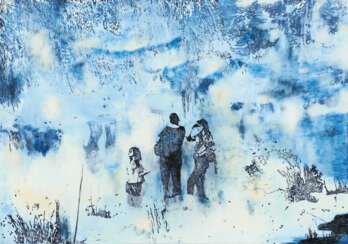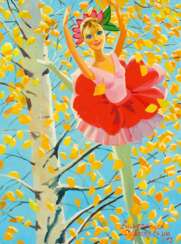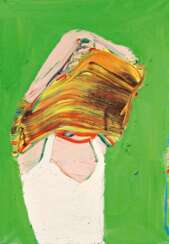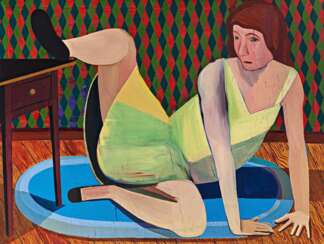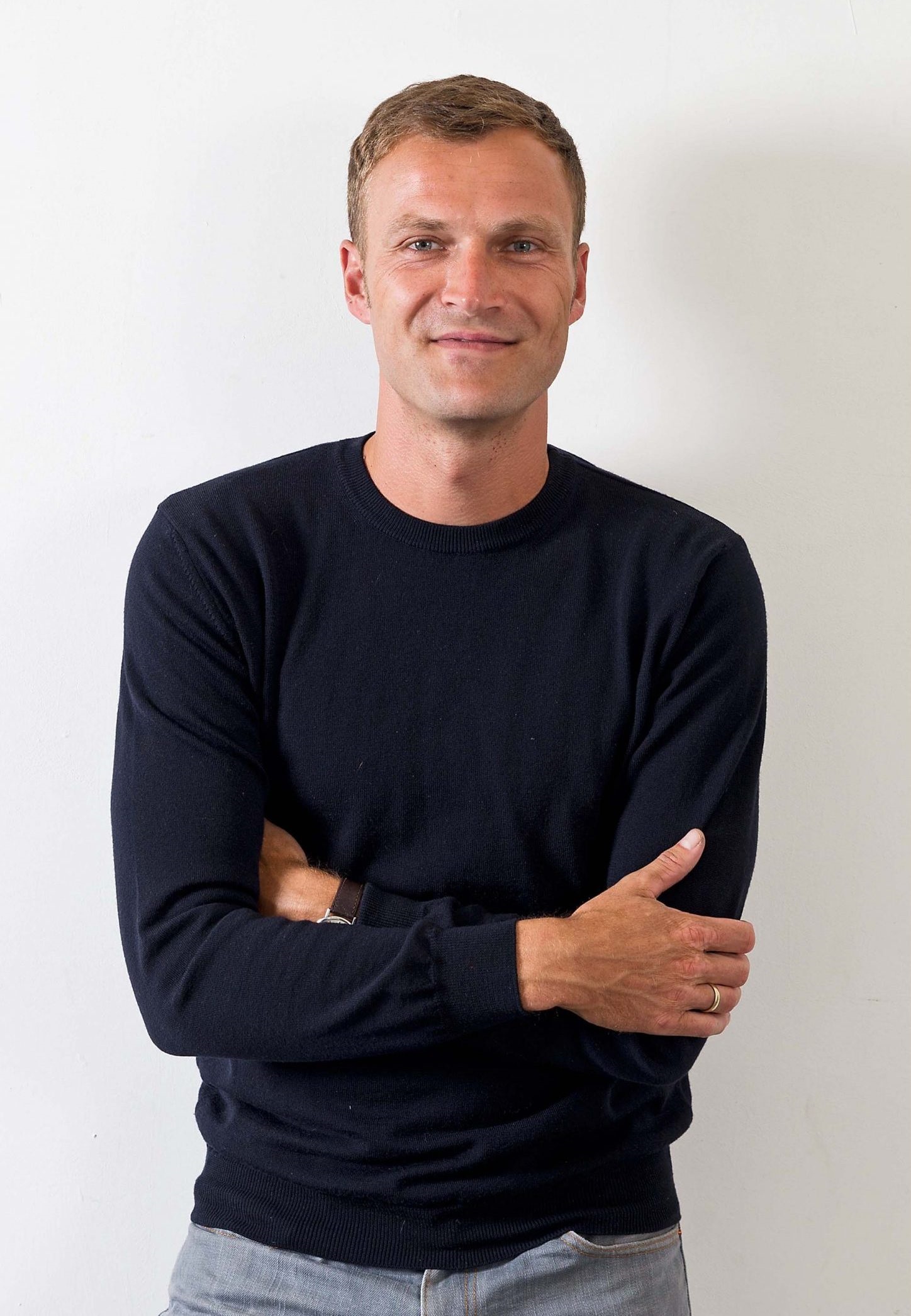
Modern and Contemporary art — A500_2: Modern, Post War & Contemporary

Henriette Grahnert is a German artist, designer and graphic artist. She graduated from the Academy of Art and Design in Leipzig and works in Dresden and in Leipzig.
The artist uses and combines a variety of painting traditions: classical abstraction and concrete painting, minimalist traditions and bad painting, American color field painting and pop art. Peeling paint, random brushstrokes, drips, smudged duct tape - remnants of the painting process are the elements that make up Grahnert's paintings.

Marlene Dumas is a Dutch artist of South African origin. She is known for her figurative paintings that explore themes of identity, race, gender, and sexuality.
Dumas studied at the University of Cape Town and later moved to the Netherlands, where she earned a degree from the Ateliers '63 in Haarlem. Her early work was heavily influenced by the political and social climate in South Africa during the apartheid era.
Dumas' paintings often depict people in various states of vulnerability, intimacy, and emotion. Her works are characterized by loose, gestural brushstrokes, and a limited color palette. She frequently draws inspiration from popular culture, news media, and art history, often appropriating and reimagining images from these sources.
Dumas has exhibited her work extensively, including at the Museum of Modern Art in New York, the Stedelijk Museum in Amsterdam, and the Tate Modern in London. She has also received numerous awards and honors for her work, including the Johannes Vermeer Award in 2012 and the Premium Imperiale in 2018.

Katharina Grosse is a German artist. As an artist, Grosse's work employs a use of architecture, sculpture and painting. She is known for her large-scale, site-related installations to create immersive visual experiences. She has been using an industrial paint-sprayer to apply prismatic swaths of color to a variety of surfaces since the late 1990s, and often uses bright, unmixed sprayed-on acrylic paints to create both large-scale sculptural elements and smaller wall works.

Pamela Rosenkranz is a Swiss multimedia artist.
She graduated from the University of Zurich, studied at the Academy of Fine Arts in Bern and at the Rijksakademie in Amsterdam.
Rosenkranz's conceptual work is built on an exploration of man's consumerist attempts to tame nature. She uses light and fluid to demonstrate her ideas, expressing them in the form of performance, sculpture, painting and installation.

Vladimir Efimovich Dubosarskii (russian: Владимир Ефимович Дубосарский) is a Russian artist. From 1994 to 2014 he worked in an art duo with Aleksandr Vinogradov (russian: Александр Виноградов).
He studied at the Moscow Art College in memory of 1905, then at the Moscow State Art Institute named after V. I. Surikov. Since 1994, a member of the MOSKh, corresponding member of the Russian Academy of Arts.
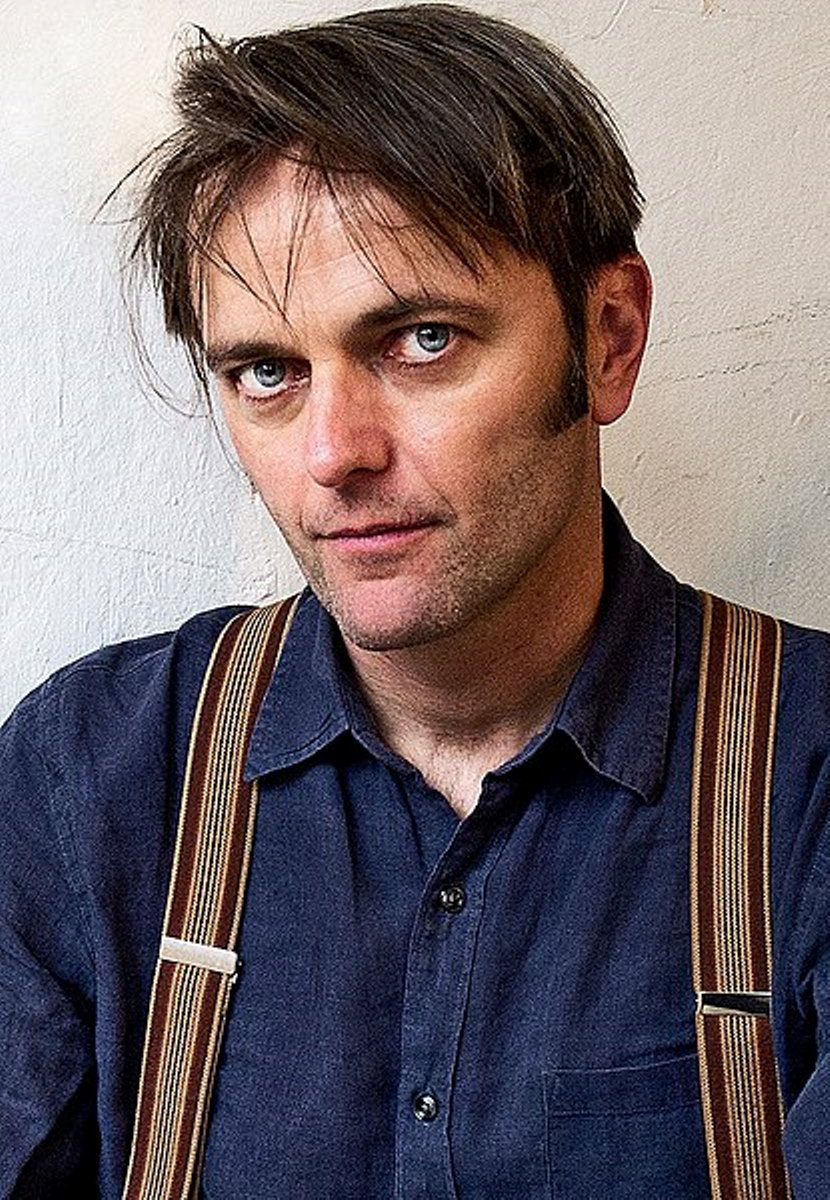
Cornelius Völker is a German painter who lives and works in Düsseldorf and New York.
He studied at the Dusseldorf Academy of Arts and is a professor of painting at the Münster Academy of Art.
Völker's work is characterized by colorful, figurative representations of everyday situations and even insignificant everyday objects in part abstract, part figurative interpretations. The artist has a special method of working with paint and creates photorealistic paintings.
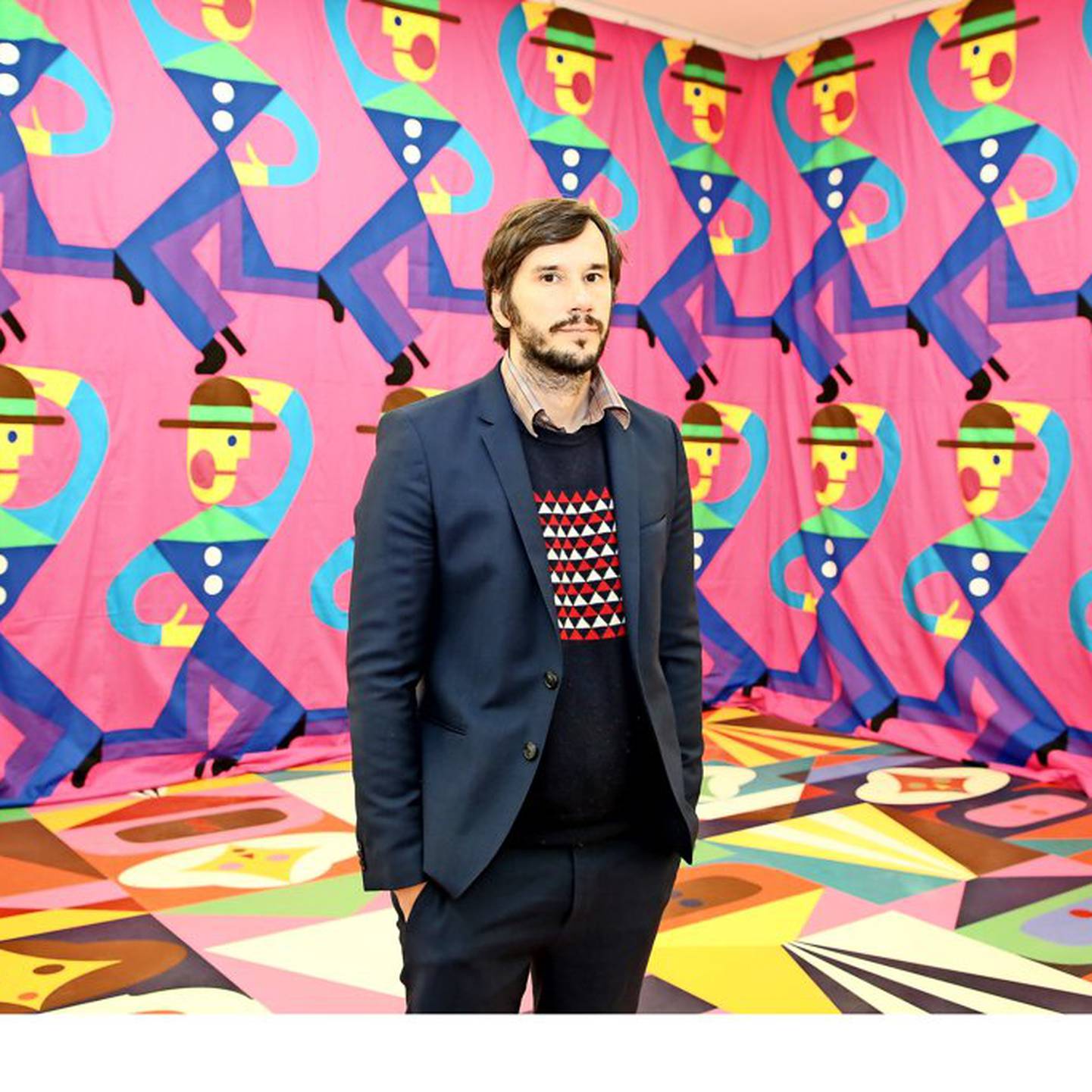
Christoph Ruckhäberle is an artist based in Leipzig. Ruckhäberle studied at the California Institute of the Arts from 1991 to 1992, and received his BFA in painting in 1995 and his MFA in 2002 from Hochschule für Grafik und Buchkunst in Leipzig. He is associated with the New Leipzig School.

Zbigniew Rogalski is a Polish installation artist and photographer.
He is considered not just a painter, but a director of paintings, because he easily mixes painting and photography, taking advantage of both. As a result, Zbigniew Rogalski achieves illusion and optical effects in his creations, whether portrait or landscape.

Christian Brandl is a German artist who lives and works in Leipzig.
He studied painting at the Leipzig Academy of Fine Arts.
Brandl's static paintings are reminiscent of 1950s psychological thrillers or even cartoons. They depict people without emotion, often in situations that are difficult to explain, the events on the canvases and the subjects are difficult to recognize.

Norbert Schwontkowski is a German painter. He studied freehand painting at the University of Design in Bremen and at the University of Fine Arts in Hamburg.
Norbert Schwontkowski's work lies between abstraction, realistic representation and caricature. He mixes the unconscious and surreal with the real, the figures and subjects in the artist's paintings resemble complex dreams.
Schwontkowski created his paints from hand-crushed pigments mixed with various materials to produce a multitude of textures.

Anton Henning is a German self-taught artist, designer, sculptor and installer.
He lives and works in Berlin, London and New York and has established himself as a talented and extraordinary furniture and interior designer. Henning is inspired by views of world capitals while developing his own avant-garde styles. He also wittily analyzes art history through his installations, sculptures and paintings.
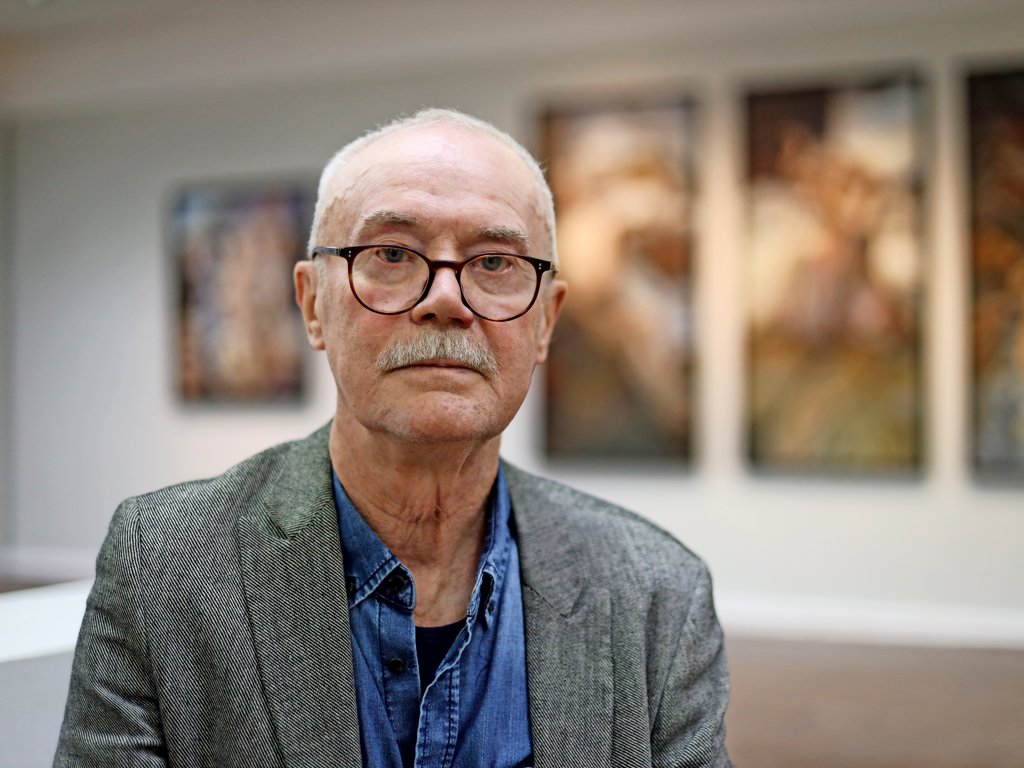
Ulrich Hachulla is a German painter and graphic artist, representative of the New Objectivity movement, who lives and works in Leipzig.
He was educated at the Academy of Fine Arts in Leipzig and, in addition to painting, has mastered many graphic techniques.
Hahulla's portraits and self-portraits depict a man in solitude, unsociable, coldly detached - these are numerous types of the respective times. The artist also creates paintings with mythological and allegorical references.

Nicola Samori is an Italian painter-painter and sculptor known for his brutal manipulation of works of art.
He graduated from the Academy of Fine Arts in Bologna and lives and works in Bagnacavallo.
Samori's work is inspired by the works of great masters, more often in the Baroque style of the 16th and 17th centuries: he creates copies of them and then rips, scratches, pierces them, thereby transforming them, filling them with the restless spirit of our time. In roughly the same way, the artist also creates sculptural works, giving birth to new, modern images rooted in the history of art.

Nicola Samori is an Italian painter-painter and sculptor known for his brutal manipulation of works of art.
He graduated from the Academy of Fine Arts in Bologna and lives and works in Bagnacavallo.
Samori's work is inspired by the works of great masters, more often in the Baroque style of the 16th and 17th centuries: he creates copies of them and then rips, scratches, pierces them, thereby transforming them, filling them with the restless spirit of our time. In roughly the same way, the artist also creates sculptural works, giving birth to new, modern images rooted in the history of art.

Jan Dörre is a German painter known for his still lifes in the modern vanitas style.
He studied painting at the Academy of Visual Arts in Leipzig, lives and works in Leipzig.
Jan Dörre paints still lifes, which are directly associated with the paintings of the old masters of the 17th century. The artist in his works repeats in different variations the familiar set of motifs found in baroque still lifes of vanitas: bread, cutlery, fruit, insects, birds, snakes, lizards, books, letters, skull, etc. But next to them in a modern setting he places objects of our time, for example, pills and empty packages from them. All this together conveys the general idea of the genre: a reminder of the transience of life, the futility of pleasure and the inevitability of death.

Jan Dörre is a German painter known for his still lifes in the modern vanitas style.
He studied painting at the Academy of Visual Arts in Leipzig, lives and works in Leipzig.
Jan Dörre paints still lifes, which are directly associated with the paintings of the old masters of the 17th century. The artist in his works repeats in different variations the familiar set of motifs found in baroque still lifes of vanitas: bread, cutlery, fruit, insects, birds, snakes, lizards, books, letters, skull, etc. But next to them in a modern setting he places objects of our time, for example, pills and empty packages from them. All this together conveys the general idea of the genre: a reminder of the transience of life, the futility of pleasure and the inevitability of death.

Michael van Ofen is a German artist who lives and works in Düsseldorf, Germany.
Van Ofen's works are based on well-known paintings from the nineteenth century. He takes them apart into pictorial elements and reassembles them like a mosaic or a puzzle, in the process creating a new work, alienated from its roots, but faithful to its original idea and form. The objects in the artist's works are divided down to the brushstrokes, they are usually dominated by a single color.
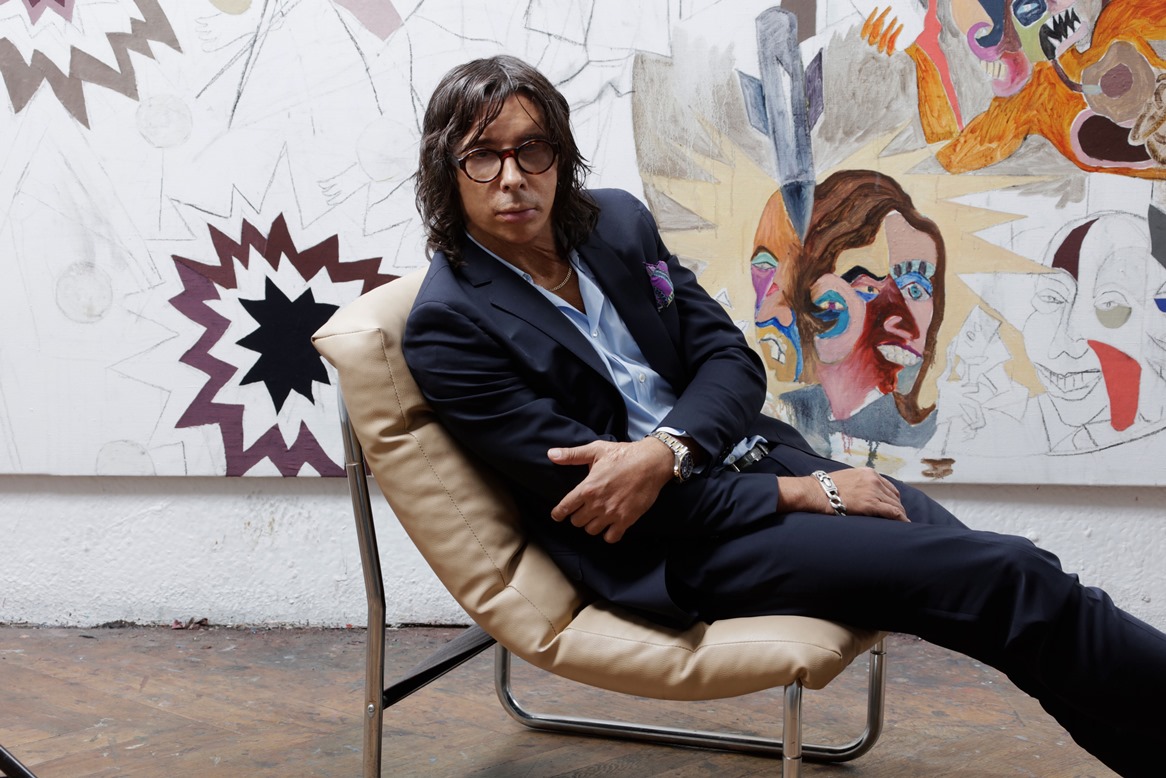
Armin Boehm is a German artist who lives and works in Berlin.
In his works, Boehm explores the connections between the urban and natural environments of modern man. He creates a fantastic urban space filled with cyborgs, politicians and flowers. In the collage technique the artist combines fragments of color, fabric, paper or metal substances from which his paintings grow. He mixes elements of pop culture and art history, architecture and literature, contemporary politics and fantasy.








